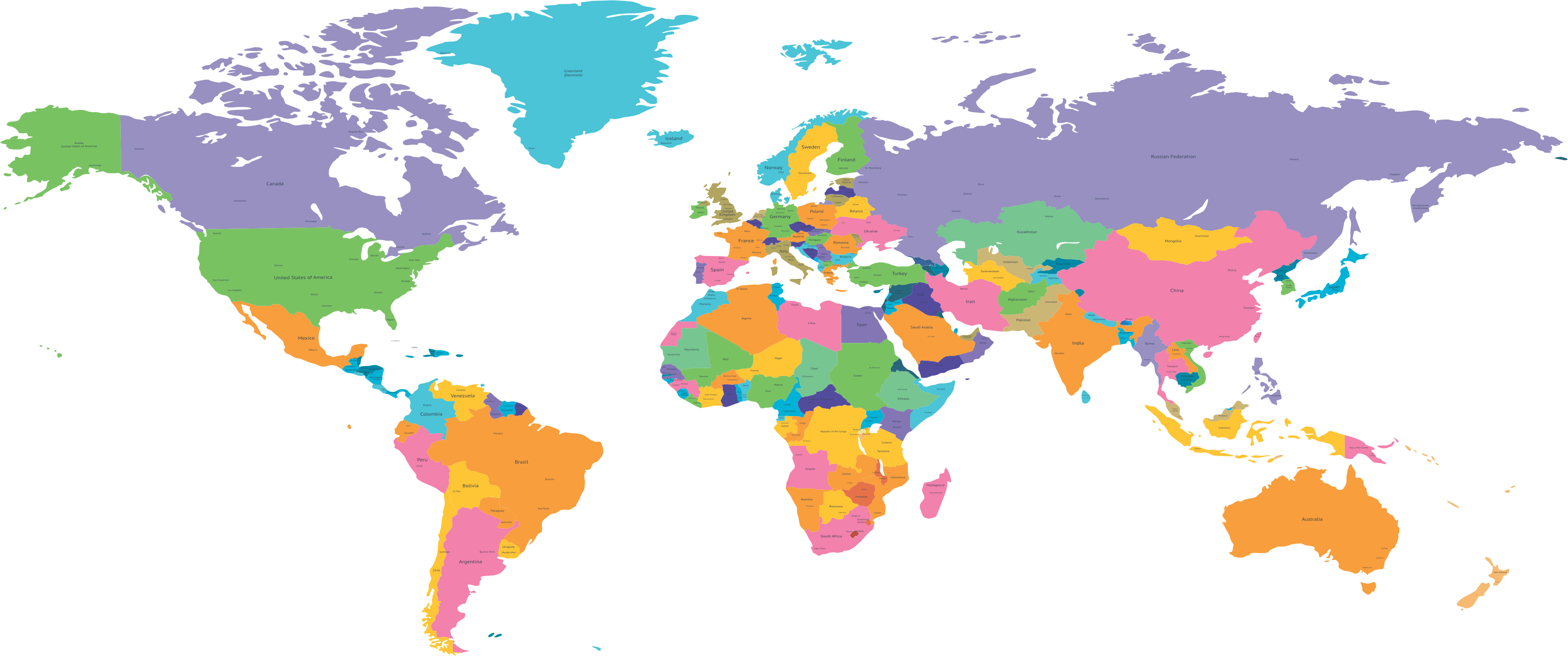Addictive Behaviours and Mental Health Outcomes: A Quantitative Comparative Study
DOI:
https://doi.org/10.55737/rl.2025.42104Keywords:
Drug Addiction, Gaming Addiction, Depression, Anxiety, StressAbstract
The objective of the study was to examine the relationship between addictive behaviours, i.e., drug addiction and gaming addiction, and mental health outcomes, namely depression, anxiety, and stress. It also aimed to compare individuals with drug addiction and gaming addiction with respect to these outcomes. The study employed a cross-sectional design with purposive sampling, including Pakistani university students aged 18 to 30 who had been either gaming or using drugs for at least one year. Three instruments were used: the Drug Abuse Screening Test-10 (DAST-10), the Gaming Addiction Scale for Adolescents (GASA; 21 items), and the Depression Anxiety Stress Scale (DASS-21). The inclusion criteria required a cutoff score: individuals had to score at least 84 out of 105 on the Gaming Addiction Scale for Adolescents or 6 out of 10 on the Drug Abuse Screening Test to qualify as addicted to gaming or drugs. Findings revealed that drug addiction had a significant relationship with depression, anxiety, and stress, while gaming addiction was significantly related to depression and anxiety but not stress. Mean comparisons showed that individuals with drug addiction scored significantly higher on depression and anxiety, and higher but not significantly on stress, than their counterparts with gaming addiction. This study contributes to the existing literature by highlighting the differential impact of drug and gaming addiction on mental health among Pakistani university students. The implications point toward the need for mental health awareness programs in universities, encouraging help-seeking behaviour, and reducing stigma toward individuals with addictions. Additionally, government and institutional support through counselling services and preventive strategies is essential to address these behavioural health challenges effectively.
References
Ahmad, A., Hassan Rizvi, A., Uzair, M., Bashir, H., & Amin, M. (2025). Prevalence of internet addiction and its relation with depression, anxiety and stress in medical students of Pakistan. Psychology, Health & Medicine, 1–10. https://doi.org/10.1080/13548506.2025.2545020
Alimoradi, Z., Broström, A., Potenza, M. N., Lin, C.-Y., & Pakpour, A. H. (2024). Associations between behavioral addictions and mental health concerns during the COVID-19 pandemic: A systematic review and meta-analysis. Current Addiction Reports, 11(3), 565–587. https://doi.org/10.1007/s40429-024-00555-1
Amiry, G. Y., Haidary, M., Azhdari-Zarmehri, H., Beheshti, F., & Ahmadi-Soleimani, S. M. (2023). Omega-3 fatty acids prevent nicotine withdrawal-induced exacerbation of anxiety and depression by affecting oxidative stress balance, inflammatory response, BDNF and serotonin metabolism in rats. European Journal of Pharmacology, 947(175634), 175634. https://doi.org/10.1016/j.ejphar.2023.175634
Bashir, S., Shahid, M. S., & Salman, F. (2024). The mediating role of social connectedness in linking Ludo Star game addiction and mental health problems in young adults. Gomal University Journal of Research, 40(3), 359–369. https://doi.org/10.51380/gujr-40-03-08
Berg, C. J., Wen, H., Cummings, J. R., Ahluwalia, J. S., & Druss, B. G. (2013). Depression and substance abuse and dependency in relation to current smoking status and frequency of smoking among nondaily and daily smokers: Smoking Frequency and Mental Health. The American Journal on Addictions, 22(6), 581–589. https://doi.org/10.1111/j.1521-0391.2013.12041.x
Brand, M., Wegmann, E., Stark, R., Müller, A., Wölfling, K., Robbins, T. W., & Potenza, M. N. (2019). The Interaction of Person-Affect-Cognition-Execution (I-PACE) model for addictive behaviors: Update, generalization to addictive behaviors beyond internet-use disorders, and specification of the process character of addictive behaviors. Neuroscience and Biobehavioral Reviews, 104, 1–10. https://doi.org/10.1016/j.neubiorev.2019.06.032
Campanella, S. (2024). Addictive behaviors: decades of research, but still so many questions! Frontiers in Psychology, 15, 1485118. https://doi.org/10.3389/fpsyg.2024.1485118
Chen, S., Huang, W., Zhang, M., Song, Y., Zhao, C., Sun, H., Wang, Y., Wang, J., Sun, Y., Zhou, L., Zhu, Y., Wang, H., Xu, Z., Bai, Y., & Chang, C. (2025). Dynamic changes and future trend predictions of the global burden of anxiety disorders: analysis of 204 countries and regions from 1990 to 2021 and the impact of the COVID-19 pandemic. EClinicalMedicine, 79(103014), 103014. https://doi.org/10.1016/j.eclinm.2024.103014
Correia, A. S., Cardoso, A., & Vale, N. (2021). Highlighting immune system and stress in major depressive disorder, Parkinson’s, and Alzheimer’s diseases, with a connection with serotonin. International Journal of Molecular Sciences, 22(16), 8525. https://doi.org/10.3390/ijms22168525
Dasare, S. U., Bagade, V. G., Bhondwe, M. R., Vedpathak, V. L., & Wadiyar, S. S. (2025). Prevalence of depression, anxiety and stress among higher secondary school students by using DASS-21 scale. SSR Institute of International Journal of Life Sciences, 11(3), 7395–7399. https://doi.org/10.21276/ssr-iijls.2025.11.3.13
Engel, G. L. (2003). The clinical application of the biopsychosocial model. The biopsychosocial approach: Past, present, and future, 1-20.
Farnia, V., Afshari, D., Abdoli, N., Radmehr, F., Moradinazar, M., Alikhani, M., Behrouz, B., Khodamoradi, M., & Farhadian, N. (2021). The effect of substance abuse on depression, anxiety, and stress (DASS-21) in epileptic patients. Clinical Epidemiology and Global Health, 9, 128–131. https://doi.org/10.1016/j.cegh.2020.08.001
Fertu, I. D., Topor, G., Stefan, C. S., & Lisa, E. L. (2025). An analysis of socially accepted addictive behaviors among adolescents. Em672. Electronic Journal of General Medicine, 22(5).
Fluyau, D., Mitra, P., Jain, A., Kailasam, V. K., & Pierre, C. G. (2022). Selective serotonin reuptake inhibitors in the treatment of depression, anxiety, and post-traumatic stress disorder in substance use disorders: a Bayesian meta-analysis. European Journal of Clinical Pharmacology, 78(6), 931–942. https://doi.org/10.1007/s00228-022-03303-4
Fooladi, N., Jirdehi, R., & Mohtasham-Amiri, Z. (2014). Comparison of depression, anxiety, stress and quality of life in drug abusers with normal subjects. Procedia, Social and Behavioral Sciences, 159, 712–717. https://doi.org/10.1016/j.sbspro.2014.12.459
Hassanbeigi, A., Askari, J., Hassanbeigi, D., & Pourmovahed, Z. (2013). The relationship between stress and addiction. Procedia, Social and Behavioral Sciences, 84, 1333–1340. https://doi.org/10.1016/j.sbspro.2013.06.752
Henriques, J., Afreixo, V., Unterrainer, H., & Senra, H. (2025). Psychological mediators of the association between obesity and symptoms of depression, anxiety, and stress. Neuropsychobiology, 84(1), 26–37. https://doi.org/10.1159/000542767
Johnson, E., Barstack, S., Xu, Y., Wise, H., Erford, B. T., Chang, C., & Delmonico, D. (2024). Psychometric synthesis of the drug abuse screening test (DAST) versions. Measurement and Evaluation in Counseling and Development: The Official Publication of the Association for Measurement and Evaluation in Counseling and Development, 1–14. https://doi.org/10.1080/07481756.2024.2399199
Katende, I. D. (2023). Social pressure, anxiety and drug dependency among students of Makerere University (Doctoral dissertation, Makerere University).
Khakbaz, H., Karami, H., Shafi’e-Abadi, A., Malmir, M., & Farhadi, M. H. (2014). The relationship between depression, anxiety, stress and aggression in patients with drug dependence. Archives of Rehabilitation, 14, 15–20.
Khan, M. A., Shahzad, S., Bano, N., Bano, Z., & Siddiqui, M. (2022). Exploring the association of meaning in life with psychological distress in male patients with substance use disorder in Pakistan. Journal of Pakistan Psychiatric Society, 19(04), 15–19. https://doi.org/10.63050/jpps.19.04.207
Khan, M. S., Mahmood, S., Badshah, A., Ali, S. U., & Jamal, Y. (2006). Prevalence of depression, anxiety and their associated factors among medical students in Karachi, Pakistan. JPMA. The Journal of the Pakistan Medical Association, 56(12), 583–586.
Lemmens, J. S., Valkenburg, P. M., & Peter, J. (2009). Development and validation of a game addiction scale for adolescents. Media Psychology, 12(1), 77–95. https://doi.org/10.1080/15213260802669458
Loton, D., Borkoles, E., Lubman, D., & Polman, R. (2016). Video game addiction, engagement and symptoms of stress, depression and anxiety: The mediating role of coping. International Journal of Mental Health and Addiction, 14(4), 565–578. https://doi.org/10.1007/s11469-015-9578-6
Lovibond, P. F., & Lovibond, S. H. (1995). The structure of negative emotional states: comparison of the Depression Anxiety Stress Scales (DASS) with the Beck Depression and Anxiety Inventories. Behaviour Research and Therapy, 33(3), 335–343. https://doi.org/10.1016/0005-7967(94)00075-u
Mohamed, I. I., Ahmad, H. E. K., Hassaan, S. H., & Hassan, S. M. (2020). Assessment of anxiety and depression among substance use disorder patients: a case-control study. Middle East Current Psychiatry, 27(1). https://doi.org/10.1186/s43045-020-00029-w
Nawaz, R., & Akhter, N. (2024). Exploring the Abuses and Solutions of Students’ Drug Addiction at the University Level. Journal of Excellence in Social Sciences, 3(1), 148–170.
Newbury-Birch, D., Walshaw, D., & Kamali, F. (2001). Drink and drugs: from medical students to doctors. Drug and Alcohol Dependence, 64(3), 265–270. https://doi.org/10.1016/s0376-8716(01)00128-4
Pallavicini, F., Pepe, A., & Mantovani, F. (2022). The effects of playing video games on stress, anxiety, depression, loneliness, and gaming disorder during the early stages of the COVID-19 pandemic: PRISMA systematic review. Cyberpsychology, Behavior and Social Networking, 25(6), 334–354. https://doi.org/10.1089/cyber.2021.0252
Potenza, M. N. (2014). Non-substance addictive behaviors in the context of DSM-5. Addictive Behaviors, 39(1), 1–2. https://doi.org/10.1016/j.addbeh.2013.09.004
Pourhamzeh, M., Moravej, F. G., Arabi, M., Shahriari, E., Mehrabi, S., Ward, R., Ahadi, R., & Joghataei, M. T. (2022). The roles of serotonin in neuropsychiatric disorders. Cellular and Molecular Neurobiology, 42(6), 1671–1692. https://doi.org/10.1007/s10571-021-01064-9
Razali, S., Jaris, N., Menaldi, A., & Sham, F. (2025). Depression, Suicidal Ideation and Behaviours, and Substance Use among. Female University Students. Environment-Behaviour Proceedings Journal, 10(32), 221–227.
Sabri, R., Hassan, M., & Asadullah, M. (2020). Video gaming and its association with depression, anxiety and stress. Ilkogretim Online, 19(4), 4869–4886.
Sarollahi, R., Ghaderi, A., Banafshe, H. R., & Atlasi, M. A. (2025). Lifetime, last month and excessive prevalence of addictive substances consumption among the general population and university students in the city of Tehran. International Journal of High Risk Behaviors & Addiction, 14(3). https://doi.org/10.5812/ijhrba-159843
Schwenk, T. L., Davis, L., & Wimsatt, L. A. (2010). Depression, stigma, and suicidal ideation in medical students. JAMA: The Journal of the American Medical Association, 304(11), 1181–1190. https://doi.org/10.1001/jama.2010.1300
Scorzelli, J. F., & Chaudhry, S. Z. (2009). Relationship between anxiety and addiction to a depressant drug. Journal of Psychoactive Drugs, 41(1), 61–66. https://doi.org/10.1080/02791072.2009.10400675
Shahid, M. S., Bashir, S., & Shoaib, S. (2024). Online Ludo Game Addiction, and Aggression in Students: Negative Emotions as a Mediator. Journal of Research in Psychology, 2(2), 74–89.
Shahid, Muhammad Sajjad, Yousaf, R., & Munir, H. (2024). Social media addiction, depression and aggression in young adults. Journal of Professional & Applied Psychology, 5(2), 276–285. https://doi.org/10.52053/jpap.v5i2.297
Shmulewitz, D., Levitin, M. D., Skvirsky, V., Vider, M., Eliashar, R., Mikulincer, M., & Lev-Ran, S. (2024). Comorbidity of problematic substance use and other addictive behaviors and anxiety, depression, and post-traumatic stress disorder: a network analysis. Psychological Medicine, 54(16), 1–11. https://doi.org/10.1017/S0033291724002794
Siddiqui, S., Khalid, F., Khalid, M. F., Towheed, A., Ahmed, S., Paracha, H., Naqvi, T. A., Hassan, T., & Owais, A. (2024). Exploring the prevalence and determinants of substance use among drug addicts in Pakistan. In Research Square. https://doi.org/10.21203/rs.3.rs-4644279/v1
Skinner, H. A. (1982). Guide for using the drug abuse screening test (DAST). Toronto: Centre for Addiction and Mental Health.
Skinner, H., Samadi, S., Khan, S. B., & Crowley, L. (2024). The Drug Abuse Screening Test (DAST): First 40 years and future developments. The Canadian Journal of Addiction, 15(4), 6–13. https://doi.org/10.1097/cxa.0000000000000222
Soh, N., Ma, C., Lampe, L., Hunt, G., Malhi, G., & Walter, G. (2012). Depression, financial problems and other reasons for suspending medical studies, and requested support services: findings from a qualitative study. Australasian Psychiatry: Bulletin of Royal Australian and New Zealand College of Psychiatrists, 20(6), 518–523. https://doi.org/10.1177/1039856212460737
Speranza, L., Miniaci, M. C., & Volpicelli, F. (2025). The role of dopamine in neurological, psychiatric, and metabolic disorders and cancer: A complex web of interactions. Biomedicines, 13(2). https://doi.org/10.3390/biomedicines13020492
Thombs, D. L., & Osborn, C. J. (2019). Introduction to addictive behaviors. Guilford Publications
Torales, J., Torres, A., Sánchez, M., O’Higgins, M., Amarilla, D., Molodynski, A., Caycho-Rodríguez, T., Ventriglio, A., Castaldelli-Maia, J. M., Barrios, I., & Red de Estudiantes Investigadores En Neurociencias. (2025). A national epidemiologic mixed-methods study on depression, anxiety, substance use, treatment needs and barriers and facilitators to treatment among medical students. Indian Journal of Psychological Medicine, 02537176251316798. https://doi.org/10.1177/02537176251316798
Villalobos-Gallegos, L., Instituto Nacional de Psiquiatría Ramón de la Fuente Muñiz (INPRFM), Unidad de Ensayos Clínicos en Adicciones y Salud Mental., Pérez, A., Mendoza, R., Graue, J., Marín-Navarrete, R., & Querétaro, Qro. (2015). Psychometric and diagnostic properties of the Drug Abuse Screening Test (DAST): Comparing the DAST-20 vs. the DAST-10. Salud mental (Mexico City, Mexico), 38(2), 89–94. https://doi.org/10.17711/sm.0185-3325.2015.012
Yen, J.-Y., Lin, H.-C., Chou, W.-P., Liu, T.-L., & Ko, C.-H. (2019). Associations among resilience, stress, depression, and Internet gaming disorder in young adults. International Journal of Environmental Research and Public Health, 16(17), 3181. https://doi.org/10.3390/ijerph16173181




